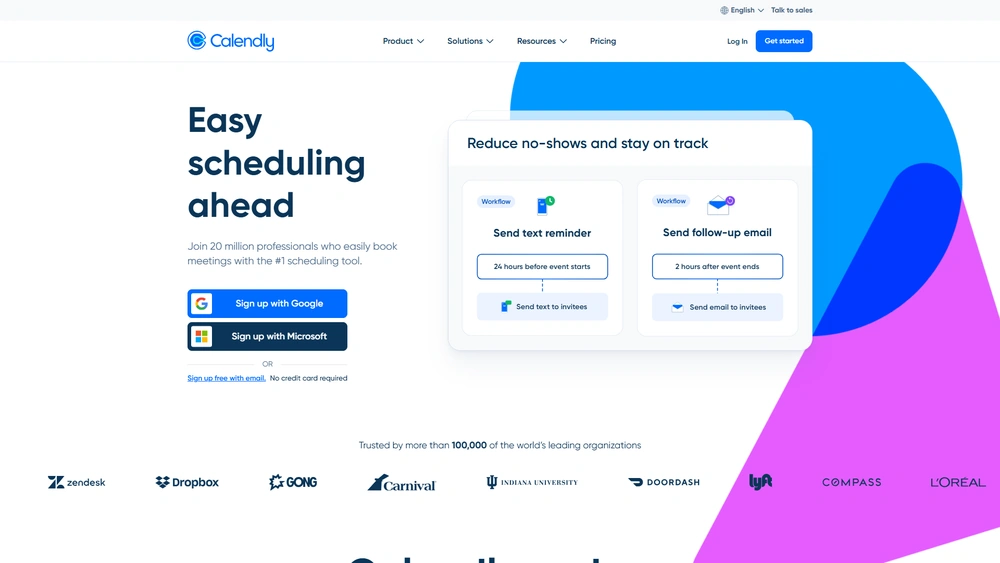Calendly Overview & 2025 Industry Position
Calendly has secured its role as one of the most trusted scheduling automation platforms for teams and individuals alike. In a business environment that is increasingly reliant on asynchronous decision-making, Calendly’s ability to reduce friction in scheduling has become even more critical. As of 2025, it supports over 20 million users worldwide and serves over 100,000 organizations across industries, from startups to large enterprises. With a powerful suite of integrations, customizable workflows, and intelligent routing tools, Calendly is no longer just a calendar coordination tool—it’s a complete scheduling infrastructure tailored for sales, recruiting, customer success, and more.
From Launch to 2025: Calendly’s Journey
Founded in 2013 by Tope Awotona, Calendly started as a simple idea to eliminate the back-and-forth of scheduling meetings. The platform appealed to professionals tired of email tag and immediately gained traction. By 2016, it had surpassed 1M monthly users. In 2019, advanced features like team scheduling and custom branding were introduced. A major Series B funding round in 2021 allowed further development of automation features and integrations. In 2023, Calendly released “Routing Forms” to accelerate qualified lead booking. Now, in 2025, Calendly’s strategy is firmly rooted in AI-assisted scheduling intelligence and deeper cross-platform syncing tools, solidifying its role as a strategic asset for business productivity.

Calendly Key Features
At its core, Calendly automates scheduling by syncing availability across multiple calendars and offering streamlined booking links. As of 2025, standout features include:
- AI-Powered Routing: Auto-routes meetings to the right person or team using dynamic rules.
- Pooled Availability: Team scheduling to show combined availability and round-robin booking.
- Embedded Booking: White-label embeds for company sites, landing pages, and emails.
- Custom Workflows: Automated follow-ups, reminders, and form collection pre/post meeting.
- Mobile Optimization: Booking flows optimized for in-app experiences and mobile schedulers.
Workflow & UX
Calendly’s clean interface has long been a fan favorite—and in 2025, that legacy continues. Users can select meeting types (one-on-one, group, round-robin), configure availability intuitively, and generate shareable booking links in under five minutes. The admin dashboard offers granular controls for team access, performance tracking, and integrations. Mobile and web interfaces deliver symmetry in experience, and ADA compliance ensures accessibility across roles and industries.
Calendly Pricing Analysis & Value Metrics
As of July 2025, Calendly offers multiple pricing tiers tailored to freelancers, SMBs, and enterprise teams. Here’s how the plans compare:
| Plan | Monthly | Key Features |
|---|---|---|
| Free | $0 | 1 calendar per user, basic scheduling, email reminders |
| Essentials | $10 | Multiple calendars, integrations, SMS reminders |
| Professional | $16 | Workflows, custom branding, routing, team pages |
| Teams | $24 | Pooled availability, round-robin, Salesforce integration |
| Enterprise | Custom | SAML SSO, SCIM provisioning, dedicated support |
Assessment: Calendly provides outstanding value at each level. The Professional and Teams plans especially deliver significant ROI for sales and recruiting teams optimizing time-to-meeting ratios.
Competitive Landscape
| Platform | Price Range | Best For | Key Differentiator |
|---|---|---|---|
| Calendly | $0–24/user | Teams, SMBs, Sales Ops | Routing + Team Scheduling |
| Acuity Scheduling | $16–49 | Solopreneurs | More appointment-type controls |
| Chili Piper | $30–80 | Sales-led orgs | Real-time lead distribution |
| OnceHub | $0–19 | Support Teams | Integration flexibility |
Calendly Integrations
Calendly integrates with 100+ platforms including:
- CRM: Salesforce, HubSpot, Zoho CRM
- Communications: Zoom, Microsoft Teams, Google Meet
- Marketing: Mailchimp, Intercom, ActiveCampaign
- Payments: Stripe, PayPal
- Calendars: Google Calendar, Outlook, iCloud
These integrations make Calendly scheduling a seamless part of broader workflows, from lead nurturing to hiring pipelines.
Top Use Cases
- Sales Teams: Speed-to-lead scheduling with routing logic for lower drop-off.
- Recruiting: Efficient coordination for candidate interviews across interview panels.
- Customer Success: Bookings for onboarding, success reviews, and renewal calls.
- Consultants/Freelancers: Easily embed availability and collect pre-payment.
Pros & Cons
- Pros:
- Robust free plan with core scheduling features
- Excellent integration ecosystem
- Scales from freelancers to enterprise
- Advanced automation with workflows and routing
- Highly customizable feels brand-native
- Cons:
- Steeper learning curve for team setups
- Enterprise pricing lacks transparency
- Limited multilingual booking options
Pro Tip: Teams should start with a single workflow template and scale complexity gradually. Calendly’s automation is powerful—but configuring it incrementally ensures consistency.
Final Thoughts
For businesses and individuals looking to streamline appointments and close the booking gap with clients or leads, Calendly remains an exceptional choice in 2025. The platform’s growth in intelligence, integrations, and interface refinement offer a strategic edge to operations teams and client-facing professionals alike. HR departments, B2B sales teams, IT consultants, and service businesses will find special value here—especially when workflows and routing come into play. Though some may find setup initially dense, the long-term efficiency gains more than justify the time investment.
Calendly FAQ
Yes, Calendly integrates seamlessly with Microsoft Outlook and Office 365 for real-time availability syncing.
Yes, paid users can apply custom branding and colors to reflect company identity across public booking pages.
Calendly connects to Salesforce, Google Calendar, Zoom, HubSpot, Slack, Stripe, Intercom and over 100 more platforms.
Yes. Group events and pooled availability for teams are supported on Professional and higher plans.
Yes. You can connect Stripe or PayPal to accept payments during the booking process.